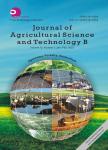Recent Climatic Effects on Seasonal Rice Yields in Bangladesh: A Statistical Overview
Recent Climatic Effects on Seasonal Rice Yields in Bangladesh: A Statistical Overview作者机构:Division of Environmental Science Development Graduate School of Environmental Science Hokkaido University Sapporo060-0810 Japan
出 版 物:《Journal of Agricultural Science and Technology(B)》 (农业科学与技术(B))
年 卷 期:2011年第1卷第7期
页 面:950-963页
学科分类:07[理学] 070601[理学-气象学] 09[农学] 0706[理学-大气科学] 0901[农学-作物学]
主 题:Bangladesh rice temperature rainfall seasonal analysis correlation.
摘 要:Expecting that agricultural yield is highly dependent on climatic conditions, particularly water availability and suitable temperature, an agroclimatic study was carried out on rice crops during three different seasons in four regions of Bangladesh. Data on climate (surface air temperature and precipitation) and seasonal rice production were examined for the period 1986-2006 from 18 rice growth observatories. The relationship between climate and rice production was statistically analyzed by removing long-term trends so that the effects of improved irrigation, which results in a general increase in crop production, may be removed. The analysis involved both single and multiple regressions. The results suggested that, during monsoon and summer, higher temperatures had negative effects on rice production, especially in the northwestern (NW) region. In winter, positive effects were observed throughout Bangladesh. Since the annual mean temperature was positively correlated with those in the three seasons individually, the annual temperature had negative effects on the annual rice production only in the NW region, while it had positive effects in the central and southern regions. With the exception of the NW region, it was basically dry, excessive rainfall both in summer and monsoon yielded floods and reduced rice yield. In winter, more rainfall showed positive effects on crop production only in the central region, which was least irrigated. These findings suggested that accelerated atmospheric warming would result in serious damage to crops during summer and monsoon. Reliable prediction of future crop production will rely on the temperature and rainfall trends in individual seasons.



